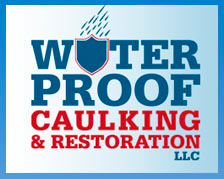 Commercial caulking is essential in maintaining structural integrity and energy efficiency. As the material that seals gaps, joints, and penetrations on a structure’s exterior, caulking prevents air and moisture infiltration. However, if left unaddressed, fluctuating temperatures can degrade caulking over time, ultimately leading to leaks, draftiness, and pest infestations.
Commercial caulking is essential in maintaining structural integrity and energy efficiency. As the material that seals gaps, joints, and penetrations on a structure’s exterior, caulking prevents air and moisture infiltration. However, if left unaddressed, fluctuating temperatures can degrade caulking over time, ultimately leading to leaks, draftiness, and pest infestations.
Proactively implementing preventative maintenance is the secret to securing that commercial caulking protects against temperature changes.
The Effects of Temperature on Caulking
Caulking works optimally within a defined temperature range, facilitating proper curing and flexibility. But when exposed to temperature extremes or cyclic freezing and thawing, caulk endures accelerated aging, resulting in shrinkage, embrittlement, loss of elasticity, and adhesion failure.
In frigid temperatures, most caulk formulations become rigid and inflexible. As buildings shift minutely due to wind loads and vibration, rigid caulk cannot flex adequately at joints. This strains the adhesive bonds securing it to the building materials. The caulk then cracks or pulls away entirely. Gaps form, allowing moisture intrusion.
Conversely, very hot temperatures soften caulking, causing it to become rubbery and stretch. While this is normally a desirable property enabling joint movement, excessively high temperatures over-soften the sealant so it slides downward due to gravity. This thinning leaves gaps at the top of the caulking bead, enabling water entry. Intense heat also leeches the plasticizing oils in the caulk, causing premature brittleness.
In addition to extreme heat or cold, repetitive freeze/thaw cycles deteriorate caulking. Water trapped in joints expands and contracts during temperature fluctuations, stressing and weakening the caulk, intensifying cracking and adhesion loss.
Long-Term Effects on Building Integrity
Temperature-degraded caulking ultimately compromises a commercial building’s structural soundness due to unchecked moisture and air penetration. The cumulative effects include:
- Accelerated deterioration of building materials, especially wood-based components, due to moisture wicking through cracks
- Growth of molds and mildew that damages interiors and poses health hazards
- Infestations of pests entering through widened cracks
- Reduction of energy efficiency due to uncontrolled air infiltration
- Electrical hazards and equipment damage if exterior moisture migrates to interior outlets or systems
- Costly structural repairs to address moisture-related decays in frameworks
Extensive sealant failures detract from a commercial property’s curb appeal due to unsightly cracks. For retail establishments relying on aesthetics to attract clientele, broken sealant beads make properties appear uncared for and uninviting.
How to Mitigate Temperature Challenges
While caulking breakdown due to temperature fluctuations is inevitable to some degree, strategic planning when installing or replacing sealant can reduce the rate of failure:
 Select caulking rated for a wide service temperature range that encompasses seasonal highs and lows in your geographic area. Check manufacturer specifications for the approved temperature span and choose products that exceed your region’s recorded extremes.
Select caulking rated for a wide service temperature range that encompasses seasonal highs and lows in your geographic area. Check manufacturer specifications for the approved temperature span and choose products that exceed your region’s recorded extremes.- Choose caulk that meets standards for UV resistance, elongation, and exterior-grade durability. Seek waterproofing caulks tested to withstand decades of solar exposure and repeated joint movement surpassing average building shifts.
- Choose caulks with the highest flexibility ratings for locations prone to expansion and contraction, such as headers. These extra-flexible formulations can stretch extensively without tearing or losing recovery capacity. They are useful in all buildings but especially necessary in high-rise structures subject to significant deflections.
- Secure proper joint sizing for the anticipated movement, preventing over-compression or stretching. Take precise width and depth measurements and consult sizing guidelines to pick appropriately sized backer rods and caulk beads. Overstuffed joints restrict movement, while undersized ones crack quickly.
- Use compatible sealant formulations and primers for each building material in the assembly. Verify that adhesives work chemically with each substrate via manufacturer documentation. Mismatched caulks fail prematurely at transitions between dissimilar interfaces.
- Follow all manufacturer specifications for surface preparations and application instructions. While tedious, meticulous surface cleaning, following open time limitations before caulk skins over, tooling beads flat for total adhesion, and meeting cure schedules boost durability. Rushing the job leads to early failures.
Maintenance Strategies
Ongoing inspections and timely repairs greatly reduce structural issues and property damage related to compromised caulking. Designate personnel to examine all exterior sealant beads multiple times annually, especially before seasonal temperature changes. In addition to watching for visible gaps or cracks, also look for:
- Darkened or yellowed caulk indicating UV damage
- Loss of bond between sealant and substrate
- Areas where the bead has become concave rather than flush with the surface
- Signs of pests entering at joints
- Any water trails or condensation near openings
For large structures, enlist building envelope consultants to thoroughly scrutinize hard-to-access areas using boom lifts and infrared cameras. They also test adhesion integrity using proprietary methods.
When inspections uncover deficiencies, immediately consult waterproofing specialists to redo faulty sections. Selecting premier-grade caulking applied under ideal weather conditions establishes long-lasting protection.
Reach Out to the Commercial Caulking Professionals
 Safeguarding your commercial property requires maintaining weather-resistant caulking year-round. Waterproof Caulking & Restoration delivers specialized services to seal commercial buildings against temperature-related sealant failures.
Safeguarding your commercial property requires maintaining weather-resistant caulking year-round. Waterproof Caulking & Restoration delivers specialized services to seal commercial buildings against temperature-related sealant failures.
Our professionals establish customized caulk inspection and repair protocols to meet manufacturing standards. We also offer premier installation of high-performance sealants that can endure climate fluctuations. Contact us today at 484-265-9646 or online to schedule a consultation.
